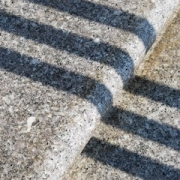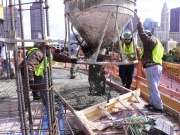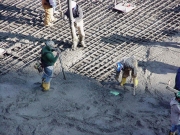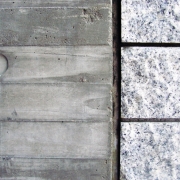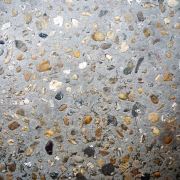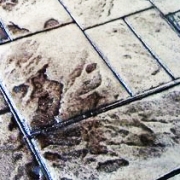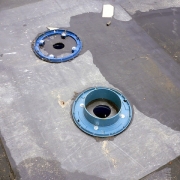- Error
{Re}habitat
Learn how adaptive reuse and upcycling can add hip design to your home, apartment, or yard with the Go Green channel's {Re}habitat series. Follow host Rachael Ranney as she shows you how to repurpose salvaged and found materials, adding fun and function to your space without breaking your budget.

This topic includes information related to precast concrete specialties installed during construction. Precast concrete specialties are concrete products that are cast in a controlled environment, delivered to a site and installed. Precast concrete specialties include; bollards, splash blocks, stair treads and trim.
One of the most important advantages of concrete is its workable, viscous state that allows it to be formed into literally any solid shape. Concrete Forming refers to the temporary or permanent support structures used to contain concrete as it is poured and while it hardens. Formwork can be made of many different materials, and it can be removed after the concrete is set or remain in place permanently. One may utilize formwork that moves either vertically or horizontally (slip form paving) to allow extrusion and finishing of the concrete. Form liners and architectural form details can also be added to the basic structural formwork to create designs and patterns in the concrete for use as a decorative finish surface.
This topic includes information related to structural concrete that is cast in place during construction. Structural concrete, which is composed of a mixture of cement, aggregate, water and admixtures, has a dull, gray color with a rough texture. It is commonly concealed behind interior finishes. Structural concrete is reinforced with steel and can be cast in place as a beam, column, girder, joist, slab or other structural member. Various types of structural concrete include; heavyweight, lightweight, shrinkage compensating, high performance and self compacting.
This topic includes information related to architectural concrete that is cast in place during construction. Architectural concrete, which is composed of a mixture of cement, aggregate, water and admixtures, is an exposed concrete that has an aesthetically pleasing, finished appearance. Architectural concrete appearance is achieved with special forms, finishing methods and special, mixture, components. Various types of architectural concrete include; heavyweight and lightweight.
This topic includes information related to exposed aggregate concrete finishing of cast in place concrete during construction. Exposed aggregate concrete finishing is achieved by adding aggregates to concrete batch mix, the surface of the cast in place concrete is removed and in some cases the concrete surface is polished.
This topic includes information related to stamped concrete finishing of cast in place concrete during construction. Stamped concrete is achieved by applying an embossed skin, random interlocking or patterned mat to the surface of hardening concrete. The skin or mat imprints a desired pattern that resembles brick, slate, flagstone, cobblestone, tile and wood finished surfaces. Stamped concrete finishes are often blended with colored concrete finishing and exposed aggregate concrete finishing.
This topic includes information related to underwater concrete placed during construction. Underwater concrete is placed using a tremie, a vertical pipe with a funnel shaped top. Mixtures for underwater concrete are designed for a continuous pour and prevention of cement washout. Additives are used in conjunction with cement and aggregate to increase underwater concrete strength.
This topic includes information related to cast roof decks installed during construction. Cast roof decks are roof deck substrate systems that provide structural support to roofing materials and anticipated loads. Common types of cast roof decks include gypsum concrete and cementitious wood fiber roof decking. Gypsum concrete roof deck systems are assemblies of form boards, purlins, wire mesh and gypsum concrete. Cementitious wood fiber decking systems are tongue and groove panels.
